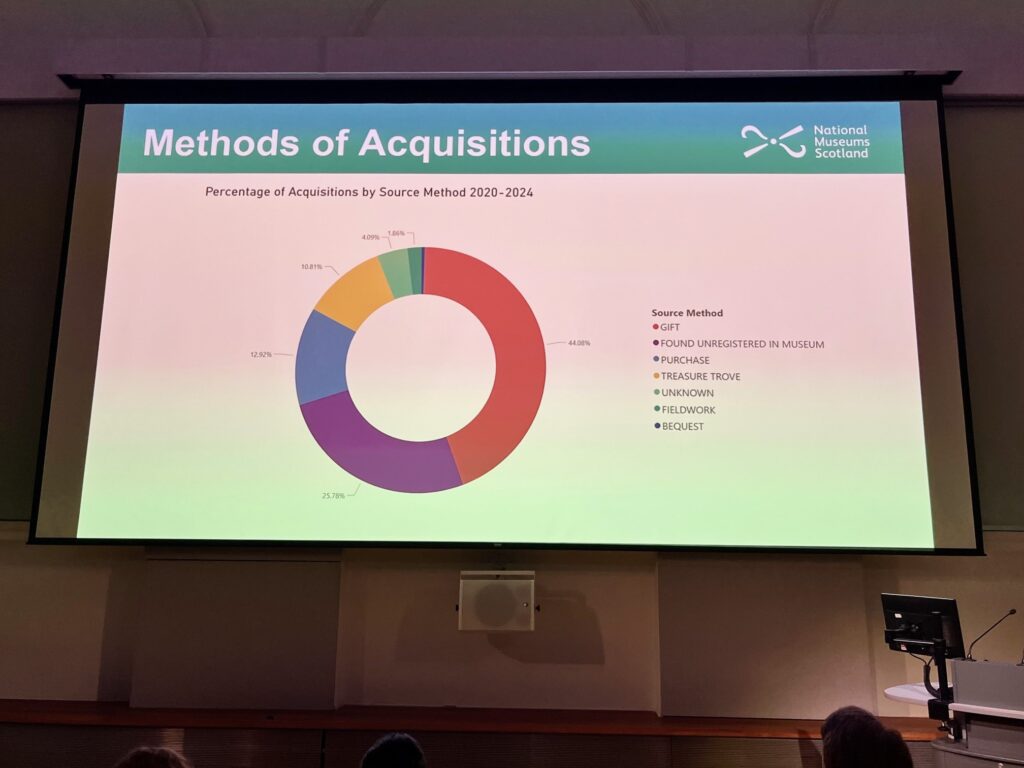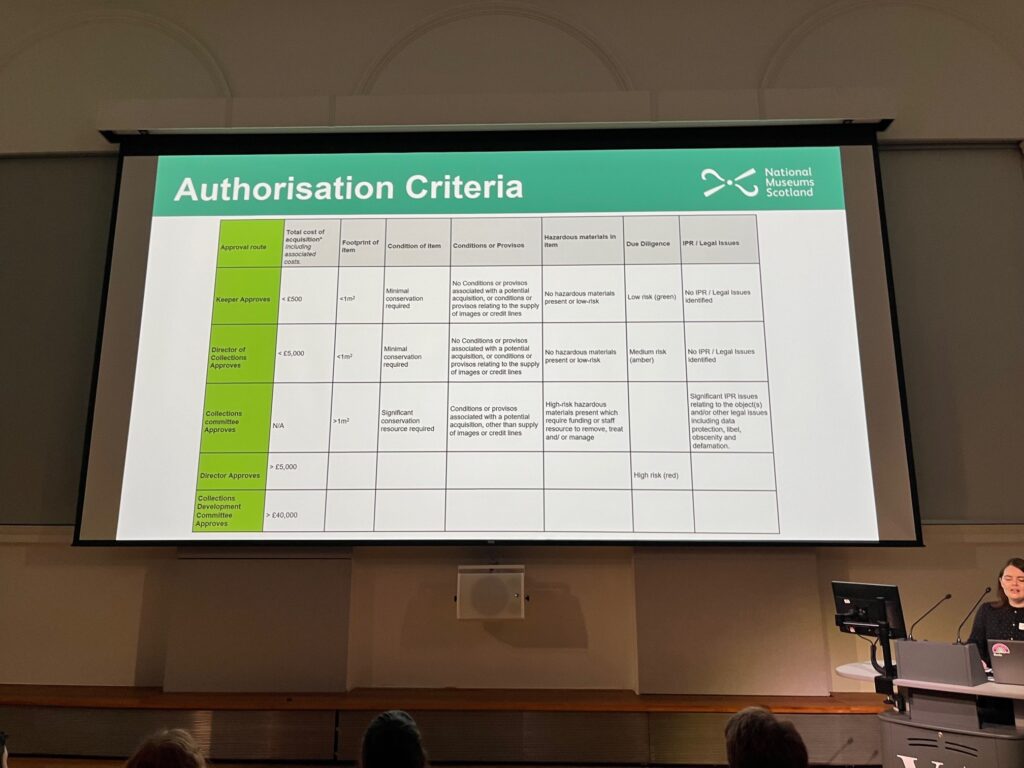From bronze age hoards to buckets of meiofauna: exploring acquisitions at National Museums Scotland – Rebecca Drummond, Assistant Registrar, National Museums Scotland
Blog written by Sally-Ann Coxon, Collections Registrar (Acquisitions), National Galleries of Scotland
Rebecca Drummond, Assistant Registrar at National Museums Scotland (NMS), gave an informative overview of NMS’s acquisition process. Rebecca is the solo acquisitions registrar, managing all registrar-led acquisitions, the purchase grant, retrospective acquisitions, audits, updating procedures and delivering staff training.
Since 2020, NMS has acquired around 340,000 items by various methods, the most common being Gift. The museum has a collecting history of over 150 years, and cares for over 12.5 million objects across a diverse number of areas. Acquisitions range from a Mary Queen of Scots casket (a private treaty sale) to 200,000 meiofauna (small invertebrates) collected from the North Sea.

Before the Covid-19 pandemic began in March 2020, all acquisitions were managed by curators with registrars’ support. At that time, a ‘priority only’ approach to collecting was adopted and management of all acquisitions shifted to registrars. As life (and collecting!) gradually returned to normal, this was unsustainable and a decision was made to split the process two ways, based on levels of risk:
- Registrar-Led: Items offered under the Acceptance in Lieu / Cultural Gift Scheme, all purchases (including Private Treaty sales and commissions), bequests and those needing international transport
- Curator-Led: UK gifts, Treasure Trove, Found Unregistered in Museum and Retrospective Accessioning

The Proposed Acquisitions (PA) module on the Axiell database is used for information gathering and tracking for perpetuity. Curators do this themselves for Curator-Led acquisitions, consulting other departments as necessary. These are approved by the Keepers of the departments if estimated costs are less than £500, storage required is less than 1m2, and due diligence, conservation and hazardous material risks are low. Higher cost/risk acquisitions must be escalated to Collections Committee. This is roughly 5% of all acquisitions.
All Registrar-led acquisitions are individually assessed, considering:
- Transport Risks: methods range from GIS-standard Fine Art companies to courier companies like Fed-Ex
- Packing, customs and risk of loss (especially for international transit)
- Hazards: a recent ice-cream van acquisition included risks of asbestos, fuel, lead and possible legionella!
- Storage: over 95% are referred to Collections Committee because of size and quarantine store needs

A Transfer of Title form for gifts, payment of a sales invoice or a Purchase Agreement for higher value or high-risk items happens in advance of the acquisition arriving on site to transfer Title.
Rebecca concluded by describing the ideals, successes, challenges and future planning. There are 74 curators across four specialist curatorial departments with only one acquisitions registrar, so the workload can be challenging. Changes and updates over four years and a 40-page document setting out the process, leads to some confusion for colleagues so the process is not always correctly followed. A review of the process is due next year, and it is hoped that the importance of the registrar input has been demonstrated to the wider organisation. The ideal would be that ALL acquisitions are managed by registrars, but this requires more resources and for the volume of acquiring to slow down.
We hope to see Rebecca at a future event to celebrate the success!
Thanks to UKRG for the travel bursary – and to the committee and speakers for putting together such a fun and informative event.

Sally-Ann Coxon, Collections Registrar (Acquisitions), National Galleries of Scotland
Images courtesy of Sally-Ann Coxon, Collections Registrar (Acquisitions), National Galleries of Scotland

 Instagram
Instagram  LinkedIn
LinkedIn  Twitter
Twitter  My Account
My Account